Heirloom tomatoes are not your average garden variety. They are a treasure trove of diversity, offering a kaleidoscope of flavors and vibrant hues. From the classic red and yellow to the more exotic black and green, heirloom tomatoes add a burst of color and flavor to any dish. But what sets them apart from other tomatoes?
Unlike hybrids, heirloom tomatoes are open-pollinated, which means their seeds can be saved and passed down from generation to generation. These organic heirloom tomato seeds have a rich history, often originating from family farms and historic gardens. They have been carefully selected for their taste, quality, size, and colorful flesh.
Cindy Martin, an expert in heirloom tomatoes, defines heirlooms as any tomato grown for its outstanding taste and characteristics. They are a testament to the diversity that nature offers and the importance of preserving heritage varieties.
Key Takeaways:
- Heirloom tomatoes come in a stunning array of flavors, colors, and shapes.
- Unlike hybrids, heirloom tomatoes are open-pollinated, allowing you to save and pass down their seeds.
- Organic heirloom tomato seeds have a rich history and are selected for their taste, quality, and colorful flesh.
- Preserving heirloom varieties is vital for maintaining biodiversity and taste diversity in our gardens.
- With hundreds of heirloom tomato varieties available, there’s a perfect one for every taste and gardening condition.
Planting Heirloom Tomato Seeds
When it comes to growing heirloom tomatoes, you have two options for starting the seeds: indoors or directly in the garden. The method you choose will depend on your climate and the length of your growing season.
If you decide to start the seeds indoors, it’s best to begin about six weeks before the last frost date. This will give the seedlings enough time to grow strong before transplanting them outdoors.
Before moving the seedlings outside, make sure to harden them off. This means gradually exposing them to the outdoor environment, such as by placing them in a protected spot outdoors for a few hours each day.
Once the seedlings have been hardened off, they are ready to be transplanted into the garden. Choose a sunny spot with well-drained soil. Heirloom tomatoes love the sun, so make sure they get at least 6-8 hours of direct sunlight each day.
If you have limited space or want the flexibility to move your plants around, growing heirloom tomatoes in containers is a great option. Choose large pots with good drainage to accommodate the plants’ root systems. This will prevent the roots from becoming waterlogged and promote healthy growth.
When planting in containers, remember to provide adequate water and nutrients. Container-grown plants may dry out faster than those in the ground, so regular watering is essential. Use a balanced fertilizer or organic compost to ensure the plants receive the necessary nutrients for healthy development.
Here are some tips for planting heirloom tomato seeds:
- Start seeds indoors 6 weeks before the last frost date
- Harden off seedlings before transplanting
- Choose a sunny spot with well-drained soil for outdoor planting
- Use large pots with good drainage for container gardening
- Provide regular water and nutrients for container-grown plants
By following these planting tips, you can set the stage for a successful growing season and enjoy a bountiful harvest of delicious heirloom tomatoes.
| Planting Tips | Indoor Planting | Outdoor Planting | Container Gardening |
|---|---|---|---|
| Timing | Start seeds indoors 6 weeks before last frost | Transplant seedlings after hardening off | N/A |
| Light Requirements | Provide bright, indirect light | Choose a sunny spot with at least 6-8 hours of direct sunlight | Place containers in a sunny location |
| Soil Requirements | Use well-draining potting mix | Ensure well-drained soil with organic matter | Use a large pot with good drainage |
| Watering | Keep soil consistently moist, but not waterlogged | Water deeply and regularly, especially during dry spells | Water when the top inch of soil is dry |
| Fertilizing | Apply balanced liquid fertilizer every 2-3 weeks | Side dress with compost or organic fertilizer | Fertilize regularly with a balanced fertilizer or organic compost |
Soil and Watering for Heirloom Tomato Seeds
Heirloom tomatoes thrive in well-drained but moist soil with a mild acidity level. Conducting a soil test before planting is essential to determine the pH and make any necessary amendments. Adjusting the pH may require adding lime to raise it or peat moss to lower it. Additionally, mixing in compost enriches the soil with nutrients and improves moisture retention.
To conserve moisture and prevent weed growth, mulching is highly recommended. You can use straw, bark, or shredded leaves as mulch around the tomato plants. Mulching not only helps retain moisture and reduce evaporation but also provides an added layer of protection to the soil.
Consistent and proper watering is crucial for heirloom tomatoes to thrive. These tomatoes require regular watering, especially during hot and sunny weather. Deep watering is necessary to enable the plants to develop strong and healthy roots, which in turn supports the growth of abundant and flavorful fruits.
However, it’s important to avoid overwatering, as it can lead to fruit splitting and a diluted flavor. Maintaining a balance of moisture without waterlogging the soil is key. To determine when to water, you can use your finger or a moisture meter to check the moisture levels in the soil. If the top inch of soil feels dry, it’s time to water. Remember, consistency is key, so establish a watering routine that ensures the plants receive enough moisture without drowning them.
Care and Maintenance of Heirloom Tomato Seeds
When it comes to caring for heirloom tomato plants, proper maintenance is essential for their health and productivity. Here are some key practices to keep in mind:
1. Provide Support
Heirloom tomatoes have a vigorous growth habit and require support to prevent sprawling and damage to the fruit. Use a trellis, stake, or cage to provide the necessary support as they grow.
2. Prune for Optimal Growth
Pruning is a crucial technique that improves airflow, reduces the risk of foliar diseases, and encourages larger fruit production. Remove suckers, which are the small side shoots that emerge in the leaf axils, to direct energy towards fruit development and prevent overgrowth.
3. Prevent Overburdening
Lower branches that touch the ground can potentially impede airflow and create an environment for pests and diseases to thrive. Regularly monitor your plants and remove any lower branches that may burden the plant.
4. Propagate Heirloom Tomatoes
If you want to expand your collection of heirloom tomato plants, you can easily propagate them by planting cuttings or sections of stem in rich potting soil or water. This allows you to preserve the desirable traits of your favorite varieties.
5. Consider Grafted Plants
Grafting is a technique that involves joining the stem of an heirloom variety with a disease-resistant rootstock. This results in increased disease resistance and overall plant vigor. Consider using grafted plants to enhance the productivity and health of your heirloom tomato garden.
6. Regular Inspections for Disease
Regularly inspect your plants for signs of disease, such as yellowing leaves, spots, or wilting. Early detection allows for prompt treatment and prevention of the spread of diseases. Take preventive measures, such as proper sanitation and the use of organic fungicides, when necessary.
“Caring for heirloom tomato plants requires attention to detail and regular maintenance to ensure their best performance.” – The Tasteful Garden
“Pruning heirloom tomatoes is key to maintaining plant health and maximizing yields.” – The Spruce
“Regular inspections and preventive measures are essential for keeping heirloom tomato plants disease-free.” – Johnny’s Research Team
By following these care and maintenance practices, you can enjoy a bountiful harvest of delicious heirloom tomatoes while ensuring the long-term health and productivity of your plants.
| Benefits of Care and Maintenance | How to Achieve It |
|---|---|
| Improved airflow | Prune suckers and lower branches |
| Reduced risk of foliar diseases | Regularly inspect plants for disease and take preventive measures |
| Larger fruit production | Provide support and prune for optimal growth |
| Preservation of desirable traits | Propagate heirloom tomatoes through cuttings or stem sections |
| Increased disease resistance and vigor | Consider using grafted plants |
Common Pests and Diseases of Heirloom Tomato Seeds
Heirloom tomatoes are amazing plants that offer a delicious bounty of flavors, but they can also fall victim to various pests and diseases. As a tomato enthusiast, it is important to be aware of the common tomato pests and diseases that can affect your precious heirloom plants.
Pests
Some of the most common pests that can wreak havoc on your heirloom tomatoes include:
- Tomato Hornworms: These large caterpillars can quickly strip the foliage of your tomato plants and cause significant damage.
- Aphids: These tiny insects feed on the sap of tomato plants, causing stunted growth and potentially transmitting plant viruses.
Dealing with pests can be challenging, but there are some preventive measures you can take:
- Beneficial fungus: Apply beneficial fungus to the roots of your tomato plants to help suppress pest populations naturally.
- Regular inspections: Regularly inspect your plants for signs of pest infestation, such as chewed leaves or clusters of small insects.
- Proper pruning: Prune your tomato plants to promote good airflow and discourage pest colonization.
Diseases
Heirloom tomatoes are susceptible to various diseases, including:
- Late Blight: This fungal disease can devastate entire tomato crops by causing brown lesions on the leaves, stems, and fruits.
- Leaf Mold: Leaf mold is a fungal disease characterized by yellowing leaves and the presence of fuzzy gray or brown patches.
Prevention is key when it comes to tomato diseases:
“An ounce of prevention is worth a pound of cure.”
Learning to identify common tomato diseases and their symptoms is crucial. By spotting the early signs of disease, you can take appropriate measures to treat them and prevent further spread.
Here are some additional tips to prevent tomato diseases:
- Crop rotation: Practice crop rotation by avoiding planting tomatoes in the same spot year after year to reduce the risk of disease buildup in the soil.
- Good sanitation practices: Keep your garden clean by removing and disposing of any infected plant debris.
- Maintaining proper air circulation: Prune your tomato plants and provide adequate spacing to promote good airflow, preventing the development and spread of fungal diseases.
Remember, prevention is always better than cure when it comes to tomato pests and diseases. By implementing these strategies, you can minimize the risk and protect your precious heirloom tomato plants.
Choosing the Right Heirloom Tomato Seeds
When it comes to selecting heirloom tomato varieties, the options can seem overwhelming. With hundreds of choices available, it’s important to choose the right ones that suit your needs and growing conditions. Here are some tips to help you make informed decisions:
Trial and Keep Records
One of the best ways to determine which heirloom tomato varieties perform well in your area is to trial different options. Plant a variety of seeds and keep records of their growth, yield, flavor, and disease resistance. This will help you identify the best performers for your specific conditions.
Consider Key Factors
When selecting heirloom tomatoes, consider factors such as color, days-to-maturity, size, and texture. Do you prefer juicy red tomatoes, or are you interested in unique colors like yellow or purple? Do you have a shorter growing season that requires early maturing varieties? Think about the qualities that are important to you and choose accordingly.
Consult Expert Recommendations
Expert growers and seed suppliers can offer valuable insights and recommendations on the best heirloom tomato varieties for different purposes. Consult variety comparison charts and seek advice from knowledgeable sources to ensure you make the right choices.
“The variety selection process is crucial for success in growing heirloom tomatoes. By considering factors like flavor, size, and disease resistance, growers can choose varieties that meet their specific needs.” – The Tasteful Garden
“When selecting heirloom tomatoes, it’s important to assess factors such as your region’s climate, disease pressures, and desired flavors. Several heirlooms offer unique characteristics that make them stand out from the rest.” – The Spruce
“Variety selection is key to successful heirloom tomato production. Growers should evaluate multiple factors, such as disease resistance, days-to-maturity, and market demand, to choose the best varieties for their specific goals.” – Johnny’s Research Team
Consider “Hy-Loom” Varieties
In addition to traditional heirloom tomatoes, newer “hy-loom” varieties have been developed to provide the flavor and characteristics of heirlooms combined with improved disease resistance and higher yields. These hybrids can be a great option for commercial growers or those looking for a balance between heirloom qualities and increased productivity.
| Variety | Color | Days-to-Maturity | Size | Texture |
|---|---|---|---|---|
| ‘Brandywine’ | Pink | 80-100 | Large | Smooth, Meaty |
| ‘Black Krim’ | Dark Red/Purple | 75-90 | Medium-Large | Juicy, Complex Flavor |
| ‘Green Zebra’ | Green/Yellow | 70-80 | Medium | Tart, Tangy |
| ‘Striped German’ | Red/Yellow | 80-85 | Large | Bi-color, Juicy |
Watering Tips for Heirloom Tomato Seeds
Proper watering is crucial for the health and productivity of your heirloom tomato plants. In this section, I will share some essential tips to help you water your plants effectively and prevent fruit splitting.
1. Avoid overwatering
Overwatering can be detrimental to heirloom tomatoes, leading to flavor dilution and fruit splitting. Instead of continuous watering, provide water intermittently in smaller irrigations. This allows the soil to dry out slightly between watering sessions, reducing the risk of fruit splitting and ensuring better flavor concentration.
2. Monitor soil moisture
Using a portable moisture meter is a great way to keep track of the moisture levels in the soil around your tomato plants. Insert the probe into the soil near the root zone to get an accurate reading. Adjust your watering schedule based on the moisture readings to maintain the ideal moisture level for your heirloom tomatoes.
3. Adjust watering frequency and amount
Depending on the weather conditions and the specific needs of your plants, you may need to adjust the frequency and amount of watering. Hot and dry weather may require more frequent watering, while cool and rainy periods may necessitate less watering. Always consider the moisture needs of your plants and the condition of the soil before deciding when to water.
4. Dry-farming technique
If you want to try a water-conserving method for growing your heirloom tomatoes, consider dry-farming. This technique involves giving the plants a heavy initial watering to establish deep roots. Once the first fruits have set, gradually reduce or even cease irrigation, relying on the plants’ established root systems to draw moisture from deeper in the soil. Dry-farming can result in concentrated flavors and reduced fruit splitting.
By following these watering tips, you can ensure that your heirloom tomatoes receive the right amount of water to thrive and produce flavorful, healthy fruits. Now, let’s move on to the next section, where we will explore the best practices for growing heirloom tomatoes in containers.
Growing Heirloom Tomato Seeds in Containers
Heirloom tomatoes are not limited to traditional garden beds. They can also thrive in containers, making them a fantastic option for those with limited space or the desire for mobility. Container gardening for heirloom tomatoes can be just as rewarding as growing them in the ground, as long as you choose the right containers and provide the necessary care.
Best Containers for Heirloom Tomatoes
When selecting containers for heirloom tomatoes, you’ll want to choose ones that offer enough space for the plants’ root systems to grow. Large pots with a minimum diameter of 18 inches are recommended to accommodate the root spread.
The containers should have good drainage to prevent waterlogging and root rot. Look for pots with drainage holes at the bottom or ensure you can add drainage holes yourself. This will allow excess water to escape, keeping the roots healthy and preventing the soil from becoming waterlogged.
Another consideration is the material of the containers. Here are some options:
- Terra cotta: These clay pots are popular for their porous nature, which allows for better airflow and moisture regulation. However, they can dry out faster, so regular watering is important.
- Plastic: Lightweight and affordable, plastic containers are easy to move around and retain moisture better than terra cotta. Choose sturdy pots made from UV-resistant materials to prevent them from breaking down under sunlight.
- Fabric: Fabric containers, such as grow bags, provide excellent drainage and air circulation, preventing overwatering and improving root health. They are also easy to store when not in use.
- Self-watering containers: These containers have a reservoir at the bottom that provides a steady supply of water to the roots. They can be a convenient option for those who may forget to water their plants regularly.
Ultimately, the choice of containers depends on personal preference, budget, and the specific needs of your growing space.
| Container Material | Pros | Cons |
|---|---|---|
| Terra cotta | Good airflow and moisture regulation | Dries out faster, may require more frequent watering |
| Plastic | Lightweight, affordable, retains moisture | May degrade under sunlight, may not provide as much airflow |
| Fabric | Excellent drainage and air circulation | May require extra support to prevent tipping |
| Self-watering | Convenient, provides steady water supply | May be more expensive, may require occasional cleaning |
Container Gardening Tips for Heirloom Tomatoes
When growing heirloom tomatoes in containers, it’s essential to provide regular watering and fertilization. Container-grown tomatoes have a smaller soil volume, which can cause them to dry out faster. Monitor the soil moisture levels and water accordingly to prevent the plants from becoming stressed.
Use premium potting soil mixed with compost to ensure optimal nutrient availability and moisture retention. The potting soil should be well-draining to prevent waterlogged roots. Adding compost helps provide organic matter and nutrients for the plants to thrive.
Remember to adjust your watering and fertilization routine according to the specific needs of your plants, as environmental conditions can vary. It’s always better to underwater slightly than overwater, as overwatering can lead to root rot and other issues.
With the right containers, proper care, and attention to watering and fertilization, you can successfully grow beautiful and flavorful heirloom tomatoes right on your patio or balcony. Just imagine the joy of picking ripe, juicy tomatoes from your own container garden!
Grafting Heirloom Tomato Seeds
Grafting is a valuable technique for heirloom tomatoes, offering increased disease resistance and overall plant vigor. By grafting heirloom varieties onto disease-resistant rootstocks, growers can enjoy higher yields and better plant health. Grafted plants have been shown to produce yields 30-50% greater than non-grafted heirlooms.
If you’re new to tomato grafting, don’t worry—it’s easier than you might think. Here are the basics:
- Selecting compatible varieties: Choose a disease-resistant tomato rootstock and an heirloom tomato variety with desirable traits.
- Proper technique: Make a diagonal cut on the rootstock and a corresponding cut on the heirloom tomato plant. Join the two cut surfaces together using a grafting clip or grafting tape.
- Care for grafted plants: After grafting, keep the plants in a warm and high-humidity environment until they have successfully fused. Gradually acclimate them to outdoor conditions before transplanting into the garden.
Grafting offers several benefits, especially for commercial production. It allows growers to capitalize on the unique flavors and qualities of heirloom tomatoes while reducing the risk of diseases that can significantly impact yields. Additionally, grafted heirloom plants are often more vigorous, leading to stronger growth and better overall performance in the garden.
| Benefits of Grafting Heirloom Tomatoes | |
|---|---|
| Increased Disease Resistance | Grafting onto disease-resistant rootstocks provides protection against common tomato diseases, allowing for healthier plants and better yields. |
| Improved Plant Vigor | Grafted heirloom tomatoes often exhibit stronger growth and increased vigor, resulting in larger, more productive plants. |
| Higher Yields | Grafted plants have been shown to produce yields 30-50% greater than non-grafted heirlooms, making them an excellent choice for commercial growers. |
Grafting heirloom tomatoes is a cost-effective and efficient solution for maximizing yields and ensuring the health of your plants. Whether you’re a home gardener looking to increase your harvest or a commercial grower seeking optimum productivity, consider incorporating grafting into your heirloom tomato cultivation.
Best Practices for Heirloom Tomato Seeds in High Tunnels
Growing heirloom tomatoes in high tunnels can be a game-changer for your crop. High tunnels offer a controlled environment that keeps the foliage dry, reduces disease pressure, and protects the plants from rain. This increased protection allows you to have better control over the environmental conditions, resulting in healthier and more productive heirloom tomato plants.
Trellising is a crucial aspect of managing the vigorous growth of heirloom tomatoes in high tunnels. It helps maintain plant health, improves air circulation, and makes it easier to harvest ripe fruits. Here are some trellising methods that work well for heirloom tomatoes in high tunnels:
- Pruning to a single or double leader system: This method involves removing the lower branches and limiting the plant’s growth to one or two main stems. By doing so, the plant focuses its energy on producing larger fruits.
- Using tall tunnels: High tunnels with ample vertical space allow the plants to grow upwards without restrictions. This prevents them from sprawling and helps maximize the use of space.
- Employing efficient trellising methods like the Rollerhook or Tomahook: These innovative systems provide excellent support for the plants while allowing easy adjustment of the trellis height as the plants grow.
When designing your high tunnel setup for heirloom tomatoes, it’s essential to consider the specific needs of your tomato varieties. Some heirloom tomatoes may require more vertical space, while others may benefit from additional support in the form of trellis netting or stakes. Experiment with different trellising methods to find what works best for your heirloom tomato plants.
By implementing these best practices for growing heirloom tomatoes in high tunnels and utilizing effective trellising methods, you can create an optimal growing environment that promotes plant health, maximizes space, and ultimately leads to a successful harvest of delicious, flavorful heirloom tomatoes.
| Trellising Methods | Benefits |
|---|---|
| Pruning to a single or double leader system | – Increases fruit size – Improves airflow – Facilitates harvesting |
| Using tall tunnels | – Allows plants to grow vertically – Maximizes use of space |
| Employing efficient trellising methods like the Rollerhook or Tomahook | – Provides sturdy support – Adjustable trellis height – Easy maintenance |
- “The Spruce”
- “Johnny’s Research Team”
Newer Heirloom-Like Tomato Varieties
In addition to traditional heirloom tomatoes, there are newer hybrid varieties that offer the same exquisite flavor and eating qualities while providing improved disease resistance and higher yields. These “heirloom-like” tomatoes are bred to preserve the characteristics of heirlooms but with the advantages of hybrids.
Some popular options include:
- ‘Marnero’: resembles the beloved ‘Cherokee Purple’ heirloom variety, known for its rich, smoky flavor and dusky purple color.
- ‘Margold’: provides a sweet and attractive alternative to the classic ‘Striped German’ heirloom, combining the best traits of both flavor and appearance.
- ‘Marbonne’: offers exceptional flavor along with vigor and disease resistance similar to the classic ‘Marmande’ heirloom, making it a reliable choice for growers seeking that old-fashioned taste.
These hybrid tomatoes derived from heirloom genetics can be a worthwhile alternative for growers who want the best of both worlds – the unique flavors of heirlooms with the added benefits of improved disease resistance and higher yields.
Conclusion
Growing heirloom tomato seeds can be a rewarding and delicious endeavor. With their diverse range of flavors, colors, and sizes, heirloom tomatoes offer a unique culinary experience.
To successfully cultivate healthy heirloom tomato plants, it’s important to follow some essential tips and best practices. Proper planting and soil management, including conducting a soil test, adding amendments, and mulching, are crucial for providing the optimal growing conditions.
Additionally, implementing effective pest and disease prevention methods, such as regular inspections and pruning, can help protect your heirloom tomatoes from common threats.
Lastly, don’t be afraid to experiment with different techniques, like grafting and container gardening, to find the methods that work best for you. By selecting suitable varieties and putting in the necessary time and care, you can enjoy the delectable flavors of homegrown heirloom tomatoes.

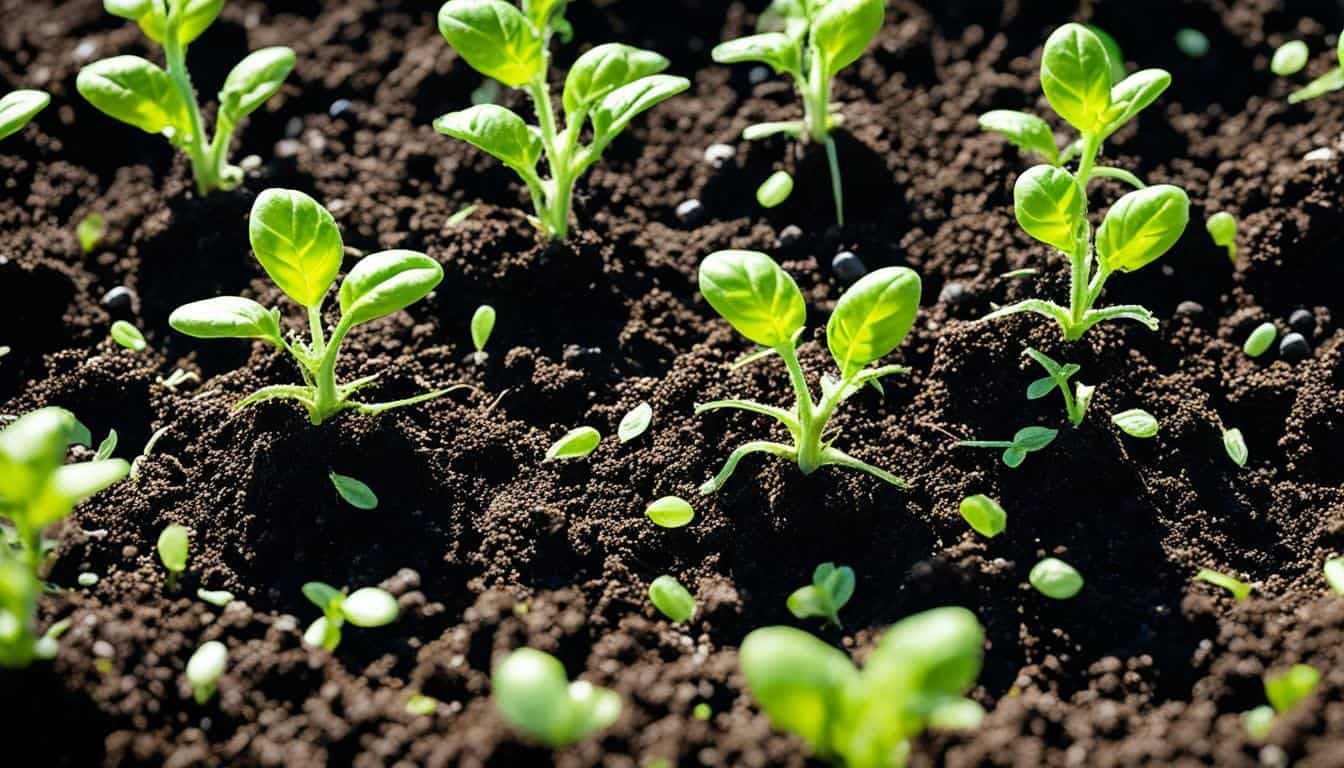
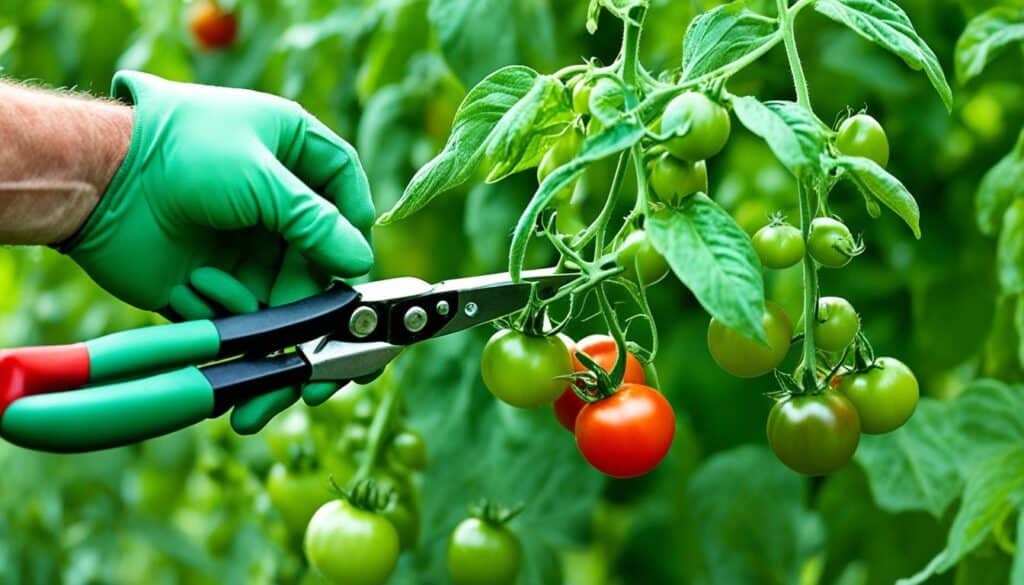
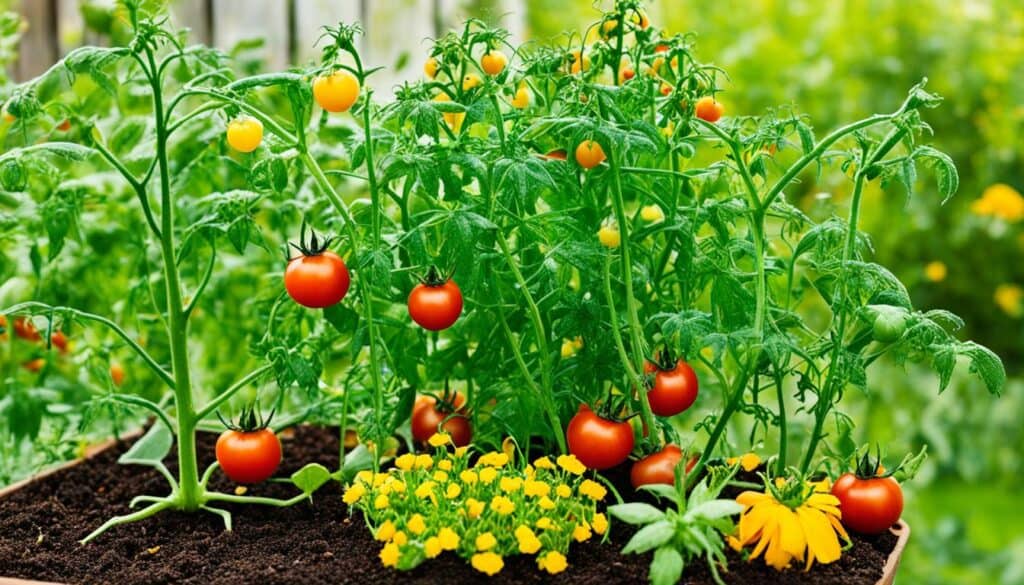

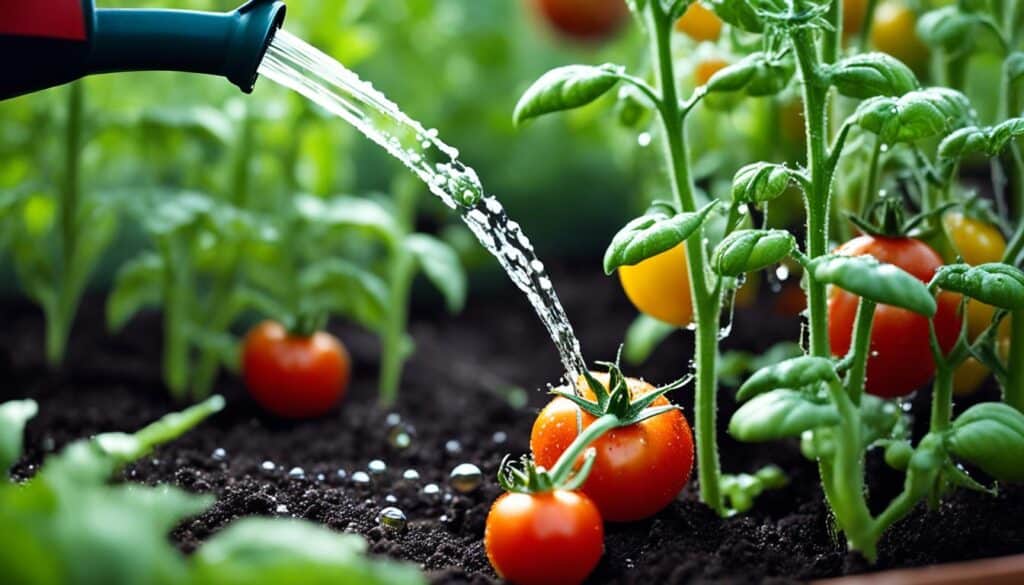
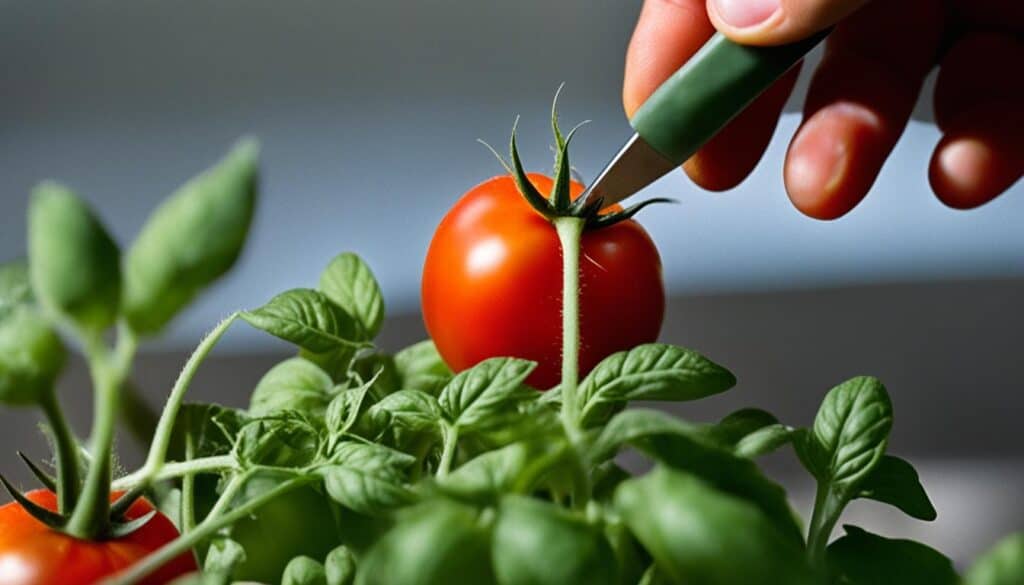



Leave a Reply